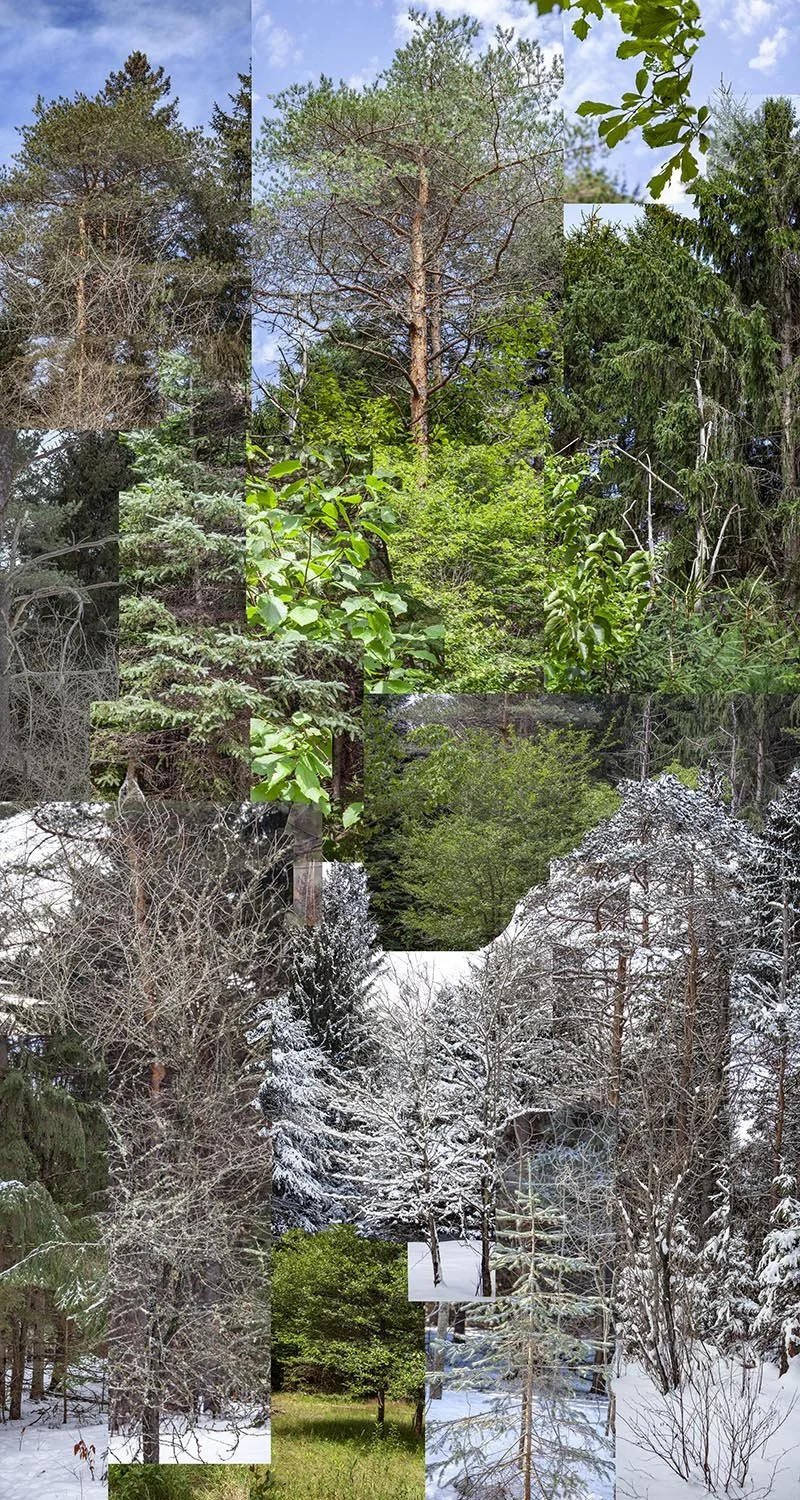At the edge of a Scots pine and Norway spruce plantation
Greatwood Forest, Goddard College, 2013-2023.
I teach in a low-residency MFA program at Goddard College, traveling to Vermont at least twice a year, enjoying my walks in woods so different from California. I’ve photographed this spot for a decade, but only recently learned the story. In the sixties students planted a Christmas tree plantation with both Norway spruce and Scots pine as an exercise in experiential learning. No one thought about the implications of planting introduced trees, although the sale of the invasive Norway spruce is now prohibited in neighboring New Hampshire. These trees were never harvested, but grew in a dense uniform thicket, unlike the diversity of the rest of the forest. What might students be taught about planting a forest today?
At the edge of a Scots pine and Norway spruce plantation
Greatwood Forest, Goddard College, Plainfield Vermont, 2019.
Goddard College is located on land that is said to have once housed, “Vermont’s Finest Farm.” The owners cleared the forest to graze sheep and dairy cows and built a luxurious manor house that we now use for meeting rooms and offices.
Like much of new England, after farming was abandoned, the forest regrew, the trees managing to adapt to the compacted soils and lower moisture availability.
In this time of climate and extinction crises, our students ask how they can aid in restoring the forests. Research shows that unassisted forest regeneration may give rise to a more diverse forest than reseeding. However, an article in the Harvard Gazette, states that New England is losing 65 acres of forest to commercial and residential development every day, pointing to the greater challenges we are facing.

